From the January 2023 issue of Apollo. Preview and subscribe here.
It’s not easy finding Mike Nelson’s temporary studio, in Orpington on the south-east outskirts of London, where he is preparing for his upcoming show at the Hayward Gallery (22 February–7 May). To get there from the high street you have to navigate your way through a sprawling shopping complex, first traversing a renovated plaza full of sleek glass-fronted chain stores, before progressing deeper to where the 1970s construction reveals itself and everything becomes more decrepit, and units are permanently shuttered. You cross some vacant lots round the back, continue past a dementia care home, and arrive at a loading zone littered with junked boxes, where finally the building that for the next few months functions as Nelson’s studio is situated. ‘It used to be an Argos warehouse,’ he says cheerily, as I gaze about the huge interior.
It’s an apposite location for an artist whose work is about evoking a sense of entropy and obsolescence, about exploring the detritus that gets left behind when the rest of the world moves on. His best-known installations take the form of rooms, or series of rooms, environments he constructs that feel like a sort of parallel world, which a viewer wanders through at their leisure – although ‘leisure’ isn’t the right word for it. The spaces he creates feel vaguely oppressive, with a derelict or transient quality – rundown minicab offices, jerry-built store rooms, seamy sleeping quarters, dingy hallways. It’s an immersive, unsettling approach that over the past two decades has made him one of the most distinctive voices in British art. In 2001 and again in 2007 he was nominated for the Turner Prize, and in 2011 he was Britain’s representative in the Venice Biennale.
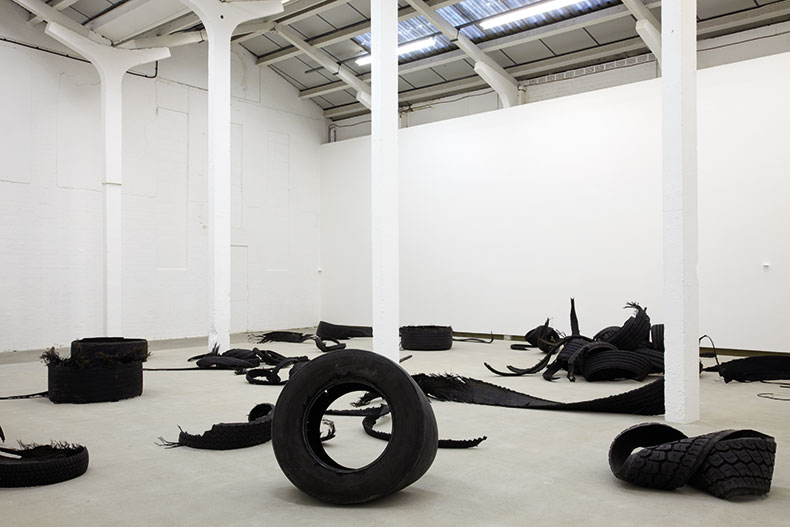
Installation view of M6 (2013) by Mike Nelson at Eastside Projects, Birmingham. Photo: Stuart Whipps; courtesy Eastside Projects; the artist; Matt’s Gallery, London; 303 Gallery, New York; Galleria Franco Noero, Turn and neugerriemschnedier, Berlin; © Mike Nelson
He admits, though, to feeling slightly daunted by the prospect of his first ever survey show – not a full retrospective, he emphasises, for the simple fact that it’s impossible to fit that many of his large-scale installations into a single venue. It’s why he needed a temporary studio space, to receive the works from storage, because his main Crystal Palace studio wasn’t big enough. ‘We were two or three weeks late getting this place. There’s a lot to do, and I knew I should be starting. I got so anxious that I began getting physical pains,’ he says, as we wander through the former warehouse stacked high with the piles of reclaimed timber and grubby furniture and weird bric-a-brac that constitute his installations in their deconstructed states. ‘As soon as I started working, I felt better. I think my body knew that I should be pushing on. Even though I’m aching, I’m hurting from doing things I haven’t done for a while, it’s a different type of pain.’
A few aches and pains are to be expected, given the labour-intensive nature of his constructions. He is 55, yet, if you look up old footage or photographs of the artist, he doesn’t seem to have changed much: the same outfit of jeans and work boots, the same long hair – like a sort of handsome hipster mechanic. Only his beard is more grizzled. He has the same predilection for trucker-style baseball caps – today’s example blazoned with the Goodyear tyres logo. He likes the darkly ironic message, given the permacrisis that characterises the current moment. ‘Also,’ he adds, ‘I really like tyres.’
He isn’t joking. Tyres are a motif in several works, a sort of emblem of movement and transition, of our obsession with mechanised, forward velocity. The installation After Kerouac (2007) consists of a long, claustrophobic corridor spiralling inwards towards a central room heaped high with them. And several works – M6 (2013), shown in Birmingham, or A52 (2017), in Germany – display shredded blow-outs collected from local motorways. Nelson explains that for the Hayward show he plans to combine elements from these works together with a section from one of his most dramatic installations, Triple Bluff Canyon (2004), featuring a shed you can enter that’s half-subsumed by sand dunes, as if long abandoned and swallowed up by desert.
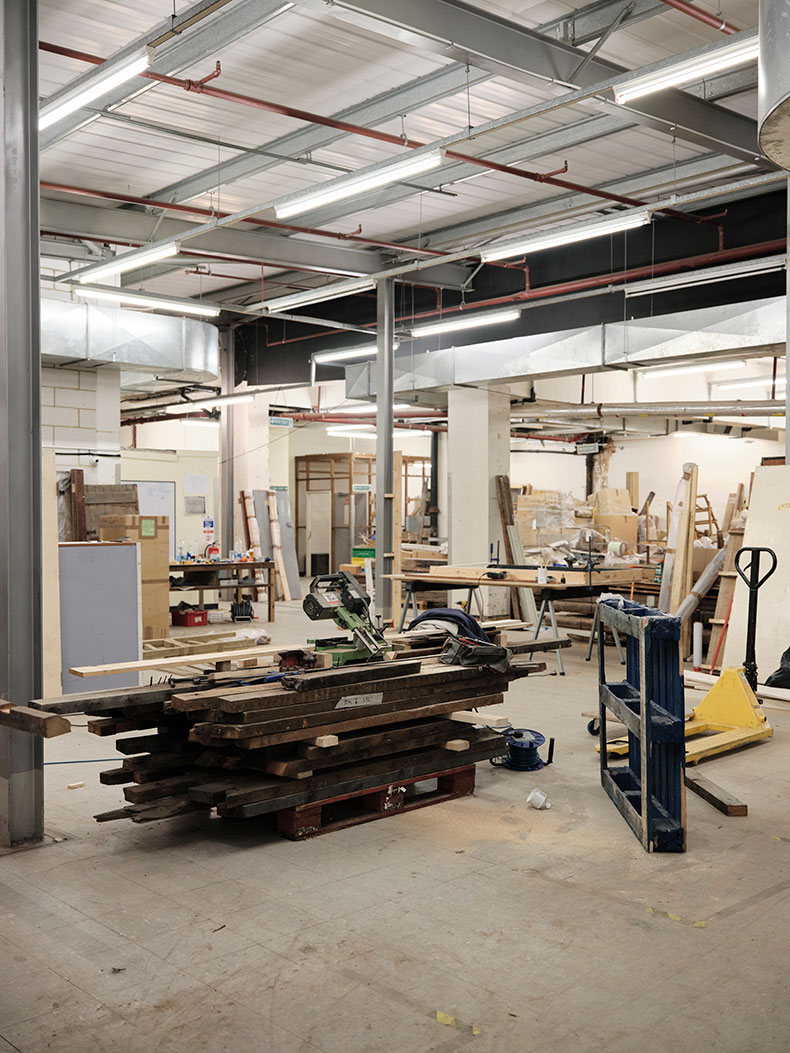
Inside Nelson’s studio in Orpington, which is housed in a former warehouse. Photo: Julian Anderson
So the exhibition is going to be less a straight survey, I ask, more a kind of amalgam, a remix of pieces? ‘Right,’ Nelson says. ‘I suppose the question for me is, what is a survey? What would be a survey of me?’ He mentions The Amnesiacs, a mythical biker gang of his own invention who supposedly co-authored several early works, and whose altar-like collections of found objects became a kind of metaphor for Nelson’s practice, for ideas of sifting and salvaging cultural flotsam. ‘That idea of The Amnesiacs came back to me – how, back in the Nineties, they tried to make sense of these things that they could no longer quite remember what their function was. I feel slightly like that’s what I’m doing with my own practice now. It’s like, at some point we all have to go to the attic and pull out stuff and try and make sense of it, and we can’t fully understand what it was or what it is. So we rebuild new stories back around it. I’m viewing the exhibition more like that – as a reimagining of works from the past.’
The only installation he’s reconstructing in something close to its entirety – Nelson explains it just needs to lose a short end-corridor to fit inside the Hayward – is The Deliverance and The Patience (2001), made the first time he showed at the Venice Biennale, a decade before he was Britain’s official entry. It’s what he’s mainly focusing on when I visit. There are plans and sketches strewn across a table, outlining the labyrinthine network of rooms, and boxes packed with the prop-like items that give each room its uncanny character, from naval-themed bar to tumbledown polling station. The dozens of different doors that viewers will eventually make their way through are leaned up around the warehouse walls, being tested and adjusted by an assistant. Like a lot of the materials Nelson uses, the doors were all originally found on streets or in skips or via office clearances, so that they had an authentically battered, grungy, slightly squalid appearance. Yet while most of the elements from 2001 remain the same, Nelson expects the Hayward version to produce a very different effect. ‘Originally, of course, it was built into an old brewery; and also it had a mezzanine level, where you could overlook it; and the structure was made from steel stud because of the fire regs in Venice. But for the Hayward I want to build it so it’s more in flux, more in a state between construction and ruin.’
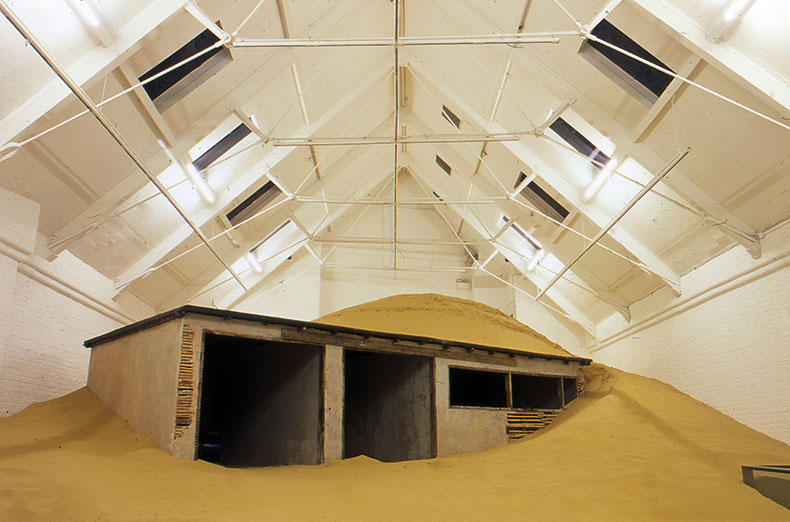
Installation view of Triple Bluff Canyon (2004) by Mike Nelson at Modern Art, Oxford.
We discuss how reimagining the works, reinstalling them in new surroundings, might alter their meanings – the specific connotations of time and place that always attach to his works. The Deliverance and The Patience, for instance, was situated on Giudecca island in Venice, and addressed ideas to do with seafaring – the title refers to two 17th-century galleons built by shipwrecked castaways – and the debate at the time around migrant boats. A more recent work, The Book of Spells (a speculative fiction) (2022), took the form of a cramped bedroom whose encompassing bookshelves heaved with travel guides, as if some lonely occupant had been longingly, tormentedly reading them all – and was widely interpreted as a response to the isolation and stagnation of lockdown.
For Nelson, though, the Hayward show allows him to bring certain works full circle, while also opening up new possibilities. ‘The inclusion of The Deliverance and The Patience seemed important, because at the time I made it, it was bound up with what had begun to be very prevalent, which was people coming up from Africa across the Mediterranean and entering Italy,’ he says. ‘I wanted to link that to other ideas about the consolidation of capitalism in the 17th century via trade routes from the Mediterranean across the Atlantic; and also to the idea of pirate utopias, and the alternative these could have offered to capitalism at the time. And this was mirrored with the birth of the fledgling internet, which could be compared to those seaways, and the optimistic idea that the World Wide Web was going to be this new space, this new freedom that would offer so much to so many people. And, now, instead, we can look at the internet today and see it as just another vessel for capitalism, something that allows the wealthy to get wealthier while others become more exploited. So it seemed like a pertinent work to reshow. You know, if a survey show is a chance to ask, “What on earth has this artist been going on about?”, well, that’s kind of what I’ve been going on about.’ He considers another piece, the sand-engulfed shed of Triple Bluff Canyon. Intended as a reference to a work by the artist Robert Smithson, Partially Buried Woodshed, which in 1970 was erected on the grounds of Kent State University a few months before the notorious shooting there of anti-war demonstrators, Nelson’s installation was about seeing echoes of that period of failed hope in the Iraq War – hence the sand. At the Hayward, though, he expects it be read more through the lens of environmental cataclysm – this vision of a building, as he puts it, ‘drowned in a desert’.
If Nelson’s phrase has a certain literary air, it’s perhaps because another of that work’s reference points is the writing of J.G. Ballard – that great portrayer of civilisation overrun by nature, of human order eroded by time. Indeed, Ballard, along with other writers of science fiction – or speculative fiction, as Nelson categorises it – has been a touchstone for Nelson, ever since he graduated from Reading University and then Chelsea College of Arts, where the emphasis had been on French cultural theory – ‘which was the fashion of the time,’ he explains, ‘and some of it was interesting. But it was quite dense. Then I found fiction in the early ’90s and I realised that a lot of the ideas I had consumed were better articulated through that.’ He credits as pivotal his discovery of, especially, writers from Poland and the Soviet Union, such as Stanislaw Lem and the Strugatsky brothers and, from there, writers as varied as H.P. Lovecraft, Jorge Luis Borges and William S. Burroughs. It was Burroughs’ novel Cities of the Red Night (1981), he says, as well as Burroughs’ concept of the Interzone – a lawless, liminal space – that inspired The Deliverance and The Patience.
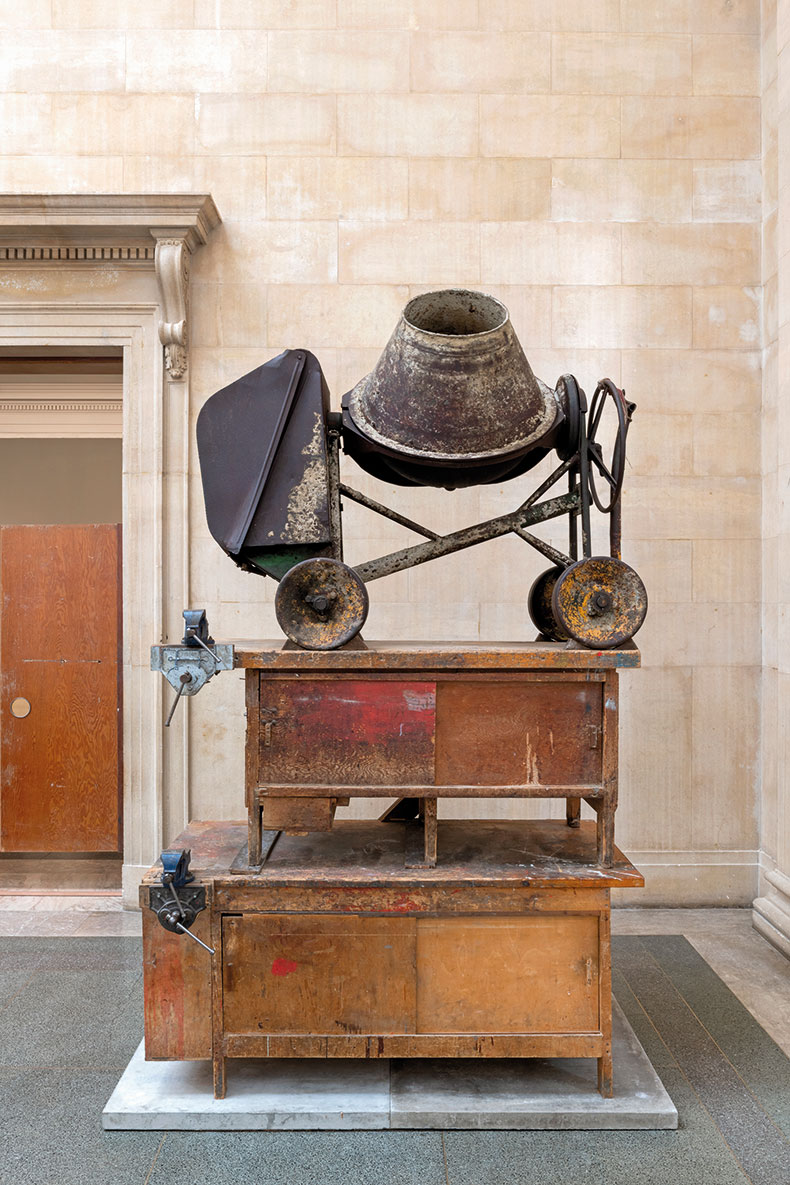
Installation view of The Asset Strippers (2019) by Mike Nelson in the Duveen Galleries at Tate Britain, London.
Not that Nelson’s installations are direct illustrations of written fiction. As he points out, the environments he builds aren’t even fictional. Of course they evince a kind of theatricality; yet everything in them, every object and situation, is real, is truly encountered by a viewer. Nor do his works try to bring out an identifiable story, a particular narrative that unfolds for the viewer. What they convey, rather, is a heightened awareness of narrative, a lingering, creeping feeling of something having once happened – but it’s up to the viewer to piece together their own associations. ‘It’s about the matter and the feel of things,’ Nelson confirms. ‘It’s about a sense of atmosphere.’
He gives an example of the sort of atmosphere he’s after, describing a trip last year with friends in France, visiting a small town in bad weather: ‘It was howling wind and sideways rain and the mountains around you, and the streets were completely empty. We wandered up to this great big monolith of a museum at the end of town, which had been built to commemorate finding the earliest human remains in Europe. And again, there was nobody else there. It was just us, in this bizarre museum in this brutalist building – like the apocalypse had happened, this end-of-time feeling, and we were somehow in the museum of it all. I thought, “This is what I want the Hayward show to be like.”’
It’s interesting to speculate where Nelson’s attraction for this particular sort of feeling, this atmosphere of haunted emptiness and finality, might come from. Our discussion about books leads to talk of family and childhood. He was born and raised in Loughborough, in the Midlands. His father worked in the local textile factory, alongside his grandfather and other relatives, initially as a mechanic. His mother worked there too, though her family were mainly coal miners or painters and decorators. Shepshed, where the factory was located, was ‘a very bizarre place, in one of those lost valleys in central Britain, where nobody would ever go to. Just the most peculiar concoction: one minute you’re in a council estate, then you’re next to a Victorian house, then there’s a 15th-century thatched cottage, then a huge factory, then a football club.’ He recalls a cousin of his father who ran a haulage company there: ‘He had this huge collection of tractors and front sections of lorries and motorbikes. So it was old “lost Britain”, in a way – and yet it wasn’t quaint, it was quite trashy.’ His father would bring home ‘stuff from the factory, these big resin drums they had, which he’d fill with bits of yarn from the machines, industrial bits and bobs, for me to make things out of as a child.’
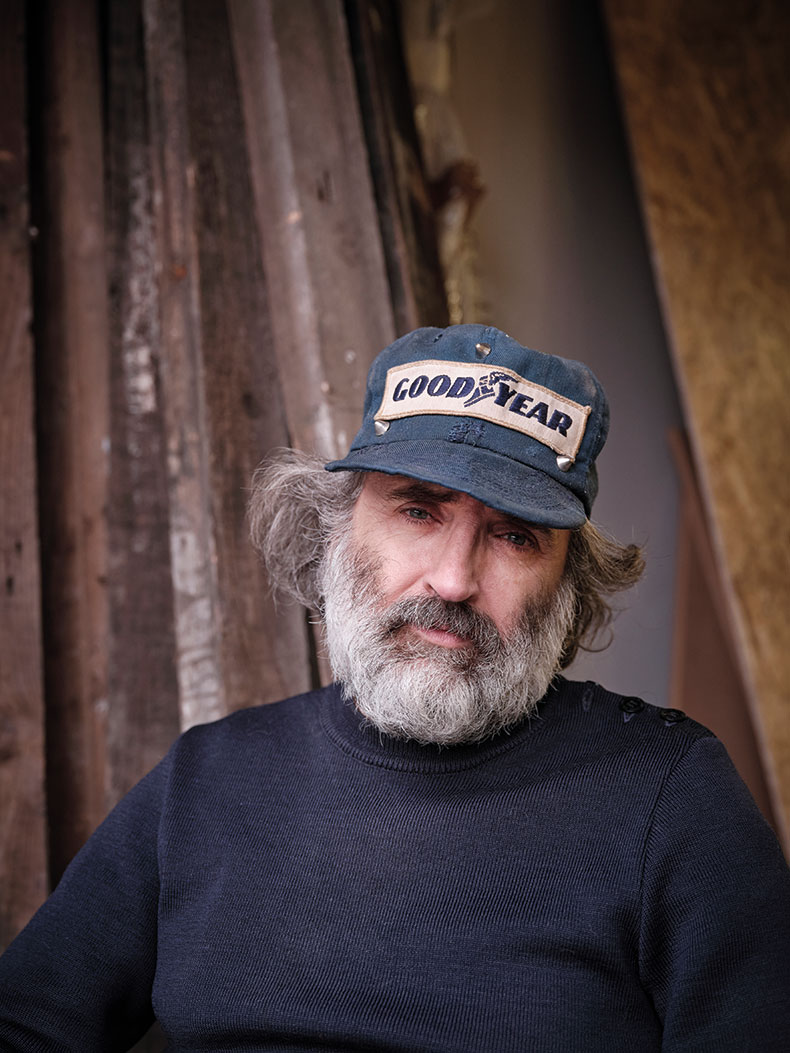
Mike Nelson (b. 1967) photographed in his temporary studio in Orpington in November 2022. Photo: Julian Anderson
He sounds sad when he talks about his late father. Yet there’s anger as well, as he tells how his father largely hated his job, once he took up a more managerial role and the factory was taken over ‘by a pretty harsh employer. These were bleak times, economically. I mean, my dad started with three friends from school and two died before they were 50, which we suspected was from stress, and my dad had half his colon taken out.’ It’s why his parents were always supportive of his desire to be an artist. ‘My mum would have liked to have been a teacher. My dad would’ve been happier staying a mechanic. So they were very open to me and my brother doing what we wanted to do, to escape the life they’d…’ He stops and thinks. ‘It wasn’t a terrible life, but it wasn’t the life they would have chosen.’ Eventually, of course, the factory closed down, along with much of the British textile industry, and the building was razed – ‘This incredible factory,’ he remembers, ‘where the machines used to run day and night.’
It’s from this conflicted stew of personal and social history that one of his most acclaimed installations emerged. The Asset Strippers (2019), commissioned by Tate Britain for the Duveen Galleries, was an exhibition of dozens of huge, ornate, otherworldly-looking pieces of machinery and equipment – each having once performed some crucial manufacturing function in factories and industries that had met their demise (including, naturally, textiles). Sourced by Nelson from salvage yards and liquidators’ auctions, the silent machines stood in their neoclassical surroundings like eerie artefacts from a vanished era, monuments to decline and obsolescence – and to the irony, of course, of once functional objects being repurposed as works of art.
Several machines from The Asset Strippers will feature in the Hayward, which Nelson seems pleased about. I ask if that’s because he sees it as his most personal work. But he says it’s more about demonstrating how in recent years he’s moved away from making large architectural constructions in favour of pieces that sit within the tradition of sculpture – objects, including his shredded tyre works, that are designed to be placed within a recognisable gallery context, rather than a whole venue being completely transformed. ‘I kind of like the Hayward too much for that,’ he says. Still, he’s enjoying the challenge of going over the old installations too, adapting and combining them. He’s looking forward to getting into the Hayward and starting the final, physical assembly – ‘Getting the chance to revisit that way of working,’ as he puts it. He thinks back to how it used to be. ‘You know, sometimes I’ll be working, plastering a wall or something, and in my mind I’m heroically making art; and then it occurs to me that actually all I’m doing is exactly the same as what many of my forebears have always done for ready cash over the years.’
‘Mike Nelson: Extinction Beckons’ is at the Hayward Gallery, London, from 22 February–7 May.
From the January 2023 issue of Apollo. Preview and subscribe here.
Subscribe to get unlimited and exclusive access to the top art stories, interviews and exhibition reviews.Unlimited access from just $16 every 3 months

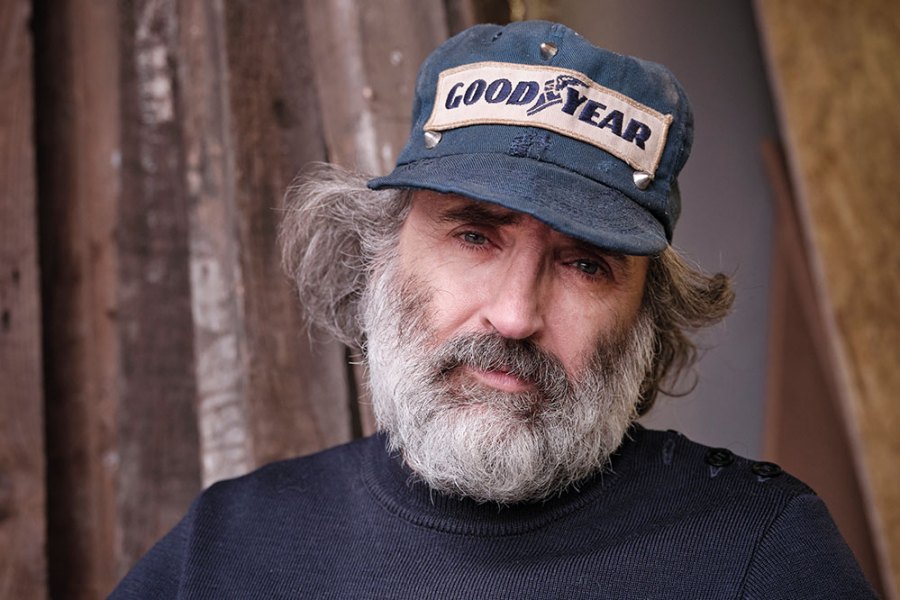
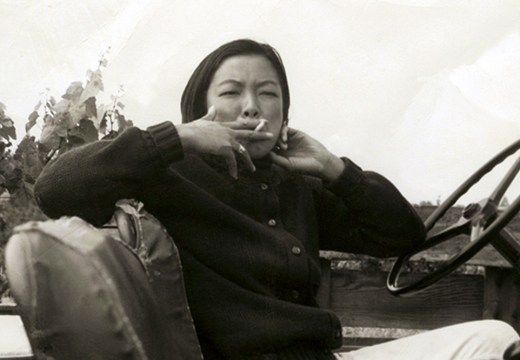
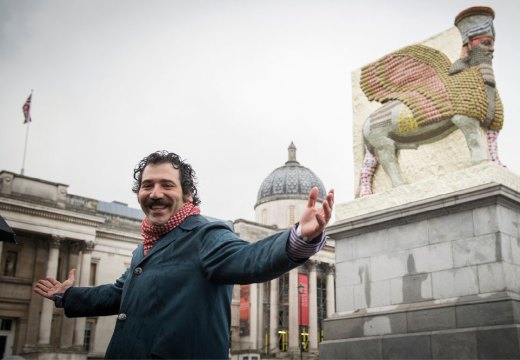
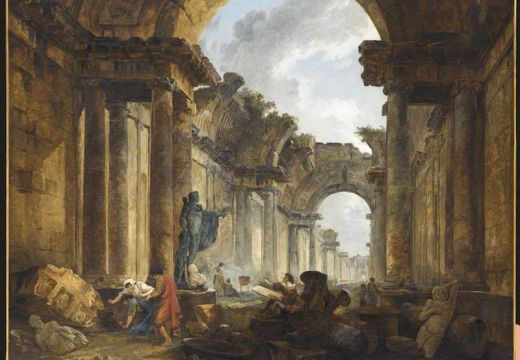









![Masterpiece [Re]discovery 2022. Photo: Ben Fisher Photography, courtesy of Masterpiece London](http://www.apollo-magazine.com/wp-content/uploads/2022/07/MPL2022_4263.jpg)
It’s time for the government of London to return to its rightful home